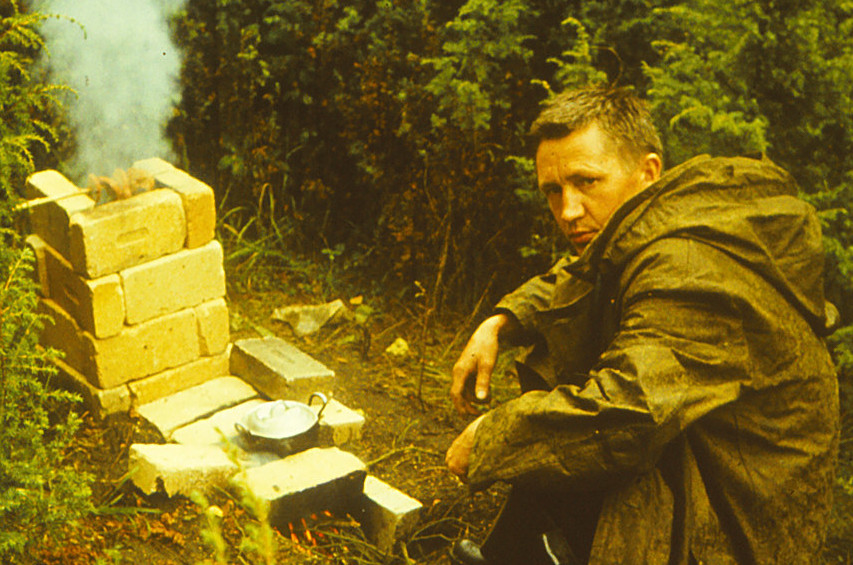
Juhan Paju

Novels
About Juhan Paju
Juhan Paju (11. III 1939 – 30. VII 2003) is remembered chiefly as the author of fluently readable crime novels, whose locations are centred around the town of Haapsalu. Haapsalu was for several decades Paju’s home town. Paju was a journalist, commentator and prose writer, to a lesser extent also a poet.
He was born in Tallinn, the son of an employee of the Järvakandi glassworks. Doctors discovered an inborn fault in his heart and predicted a short life for him. In the course of his life he underwent numerous medical operations. Paju grew up at Järvakandi and graduated from Vändra Secondary School in 1958. He studied radio engineering at Tallinn Polytechnic School, and from 1960 to 1963 worked as an electrical engineer at the Institute of Cybernetics of the ESSR Academy of Sciences in Tallinn. From 1968 to 1969 he was a photo-correspondent for a regional newspaper at Muujärvi in Karelia. At about the same time he got to know his Russian wife (later a teacher of physics in Haapsalu); the family had one son. In 1968 Juhan Paju graduated in journalism from the State University of Tartu. From 1972 to 1974 he worked as a journalist on local issues for the Haapsalu newspaper Töörahva Lipp (The Workers’ Flag). Between 1974 and 1977 he was a lighthouse-keeper at Ristna and Hobulaiu on Hiiumaa island. Working at the lighthouse offered him a change and gave inspiration; he told his friends that he loved the sea. Wonder and reverence for the sea can be discerned in the natural-romantic poems he published in the early seventies in the Haapsalu newspaper. For the literary reportage Roostetanud maa (‘Rusty Land’), which appeared in 1978 in Töörahva Lipp, he won third prize in the Bellaad literary reportage writing competition organised by the youth press of the Baltic countries and Belarus. Works of local history and the 41-page piece on the theme of the sea, Tuulte roos (‘Rose of the Winds’), which appeared in the Haapsalu paper, date from the eighties.
Paju’s first adventure novels, Kagupassaat (‘South-east Trade Wind’), Hiromandi kokteil (‘The Chiromant’s Cocktail’) and Haapsalu detektiiv (‘The Haapsalu detective’) appeared in 1990/1991. Thus began his exceptionally productive literary activity (in the course of 12 years, 12 novels and other works of his were published), which lasted until the author’s death in 2003. A large number of Paju’s works from the nineteen-nineties were quickly translated into Finnish and were published in Finland, where he enjoyed considerable success with readers and attention from critics. The Estonian critic Peeter Künstler, put it this way in the headline of a review published in 1997: “Juhan Paju produces excitement”. That remark well expresses Paju’s role as a writer of stories and novels. In addition to the detective novel genre, he tried his hand at science fiction and historical narrative as well.
L. P. (Translated by C. M.)
Books in Estonian
Poetry
Kuuvalge õhtulaul. Haapsalu: Anamnesia, 2001, 72 lk.
Novels
Haapsalu detektiiv. Vormsi: Nastiku Kirjastustalu, 1990, 114 lk.
Hiromandi kokteil. Tallinn: Eesti Raamat, 1991, 148 lk.
Kagu-passaat. Haapsalu: Velle, 1991, 134 lk.
Sankt-Peterburgi viirastused. Tallinn: Hara, 1993, 128 lk.
Surm Hundikaril. Haapsalu: Ajaleht “Lääne Elu”, 1993, 94 lk.
Suur šantaaž. Tallinn: Hara, 1993, 201 lk.
Lasud kodutänaval. Tallinn: Kupar, 1995, 303 lk.
Katkenud romaan. Tallinn: Eesti Raamat, 1997, 198 lk.
Hõõguv rist. Lemberomaan ühe laiba ja vampiiriga. Tallinn: Eesti Raamat, 1997, 253 lk.
Vanaema mõis. Esimene raamat. I–II osa. Tallinn: Varrak, 1999, 255 lk.
Vanaema mõis. Teine raamat. III osa. Tallinn: Varrak, 2000, 263 lk.
Kadunud viiuldaja. Tallinn: Vastus, 2001, 159 lk.
Mudasegaja armuke. Tallinn: Ersen, 2003, 172 lk.
Travel guide
Haapsalu juht. Tallinn: Eesti Raamat, 1986, 77 lk.


